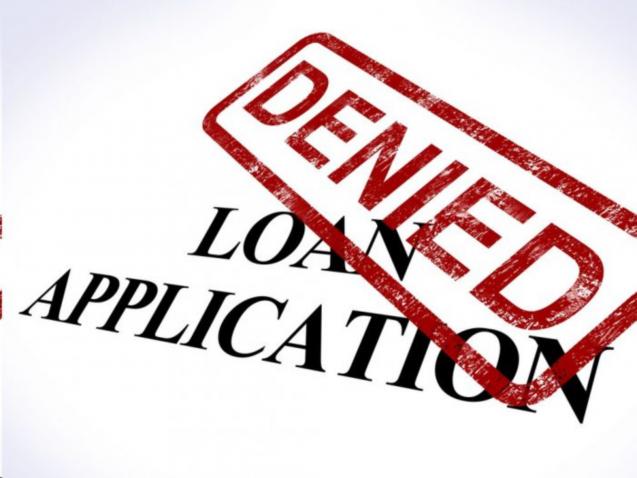
Unlocking Opportunities: The Ultimate Guide to Property Development Loans in Australia
Are you a property developer ready to take on your next big project in Australia? If so, you'll likely need a property development loan to bring your vision to life. But with the myriad of options available, it can be challenging to navigate the world of financing. Fear not, as this ultimate guide to property development loans in Australia is here to help you unlock the opportunities that await.
In this comprehensive guide, we'll walk you through everything you need to know about property development loans in Australia, from understanding the different types of loans available to finding the right lender for your project. We'll also explore the eligibility criteria, the loan application process, and essential factors to consider before taking the plunge.
Whether you're looking to develop residential or commercial properties, this guide will provide you with valuable insights to make informed decisions and maximize your chances of securing the financing you need. So, let's dive in and unlock the door to your property development success in Australia.
Understanding the Property Development Process
Before delving into the world of property development loans, it's crucial to have a solid understanding of the property development process itself. Property development involves acquiring land or existing properties and transforming them into new developments for residential, commercial, or mixed-use purposes.
The process typically includes conducting feasibility studies, obtaining necessary permits and approvals, engaging architects and contractors, and overseeing construction and marketing efforts. Property developers take on significant risks and responsibilities throughout each stage of the process, making it essential to have a well-thought-out financing plan in place.
Types of Property Development Loans Available in Australia
When it comes to property development loans in Australia, there are several types of financing options available to suit different project requirements. Understanding these loan types will help you choose the right option for your specific development needs.
Before applying for a property development loan, it's essential to understand the eligibility criteria set by lenders. Meeting these criteria will increase your chances of approval and ensure a smooth loan application process.
Now that you understand the different types of property development loans available and the eligibility criteria, let's explore the loan application process. Applying for a property development loan can be a complex and time-consuming endeavor, but careful preparation can significantly increase your chances of success.
Factors to Consider When Choosing a Lender for Property Development Loans
Choosing the right lender for your property development loan is crucial for the success of your project. Consider the following factors when making your decision:
Risks and Challenges in Property Development Loans
While property development loans offer great potential for unlocking opportunities, it's important to be aware of the risks and challenges associated with this type of financing. Understanding these risks will help you mitigate them effectively and make informed decisions.
Tips for Successful Property Development Loan Applications
Applying for a property development loan can be a competitive process, but with the right approach, you can maximize your chances of success. Consider the following tips when preparing your loan application:
Conclusion: Unlocking Opportunities with Property Development Loans
Property development loans provide aspiring developers with the means to unlock opportunities and bring their visions to life. Whether you're looking to develop residential or commercial properties, understanding the types of loans available, the eligibility criteria, and the loan application process is crucial for securing the financing you need.
By conducting thorough market research, preparing comprehensive feasibility studies, and building strong project teams, you can increase the viability of your projects and maximize your chances of success. Choose lenders who specialize in property development loans, offer competitive terms, and provide the support and guidance necessary for your development journey.
Remember to consider the risks and challenges associated with property development loans, and develop strategies to mitigate these risks effectively. Learn from successful case studies in Australia to gain valuable insights and apply best practices to your own projects.
In this comprehensive guide, we'll walk you through everything you need to know about property development loans in Australia, from understanding the different types of loans available to finding the right lender for your project. We'll also explore the eligibility criteria, the loan application process, and essential factors to consider before taking the plunge.
Whether you're looking to develop residential or commercial properties, this guide will provide you with valuable insights to make informed decisions and maximize your chances of securing the financing you need. So, let's dive in and unlock the door to your property development success in Australia.
Understanding the Property Development Process
Before delving into the world of property development loans, it's crucial to have a solid understanding of the property development process itself. Property development involves acquiring land or existing properties and transforming them into new developments for residential, commercial, or mixed-use purposes.
The process typically includes conducting feasibility studies, obtaining necessary permits and approvals, engaging architects and contractors, and overseeing construction and marketing efforts. Property developers take on significant risks and responsibilities throughout each stage of the process, making it essential to have a well-thought-out financing plan in place.
Types of Property Development Loans Available in Australia
When it comes to property development loans in Australia, there are several types of financing options available to suit different project requirements. Understanding these loan types will help you choose the right option for your specific development needs.
- Construction loans: Construction loans are designed to finance the actual construction phase of a development project. These loans provide funds for materials, labor, and other construction-related expenses. They are typically interest-only during the construction period and convert to a traditional mortgage once the project is completed.
- Land loans: Land loans are specifically for purchasing the land on which the development will take place. These loans cover the acquisition costs and allow developers to secure the land before proceeding with the construction phase. Land loans often have shorter terms and higher interest rates compared to construction loans.
- Mezzanine loans: Mezzanine loans bridge the gap between the developer's equity and the senior debt provided by traditional lenders. These loans are typically unsecured and carry higher interest rates to compensate for the increased risk. Mezzanine loans can be a useful tool for developers looking to maximize their leverage and secure additional funds.
- Joint venture financing: Joint venture financing involves partnering with an investor or a development company to share the risks and rewards of a project. In this arrangement, the investor provides the necessary funds while the developer contributes their expertise and manages the project. Joint venture financing can be an excellent option for developers who lack the necessary capital or track record to secure traditional loans.
Before applying for a property development loan, it's essential to understand the eligibility criteria set by lenders. Meeting these criteria will increase your chances of approval and ensure a smooth loan application process.
- Experience: Lenders often require property developers to have a track record of successful projects. This demonstrates your ability to manage risks and complete developments in a timely manner. While this can be challenging for first-time developers, partnering with experienced professionals or exploring joint venture financing options can help overcome this hurdle.
- Financial stability: Lenders will assess your financial stability by examining your credit history, income, and existing debt obligations. A good credit score and reliable income source will strengthen your loan application. It's crucial to have a clear understanding of your financial position and be prepared to provide the necessary documentation to support your application.
- Feasibility of the project: Lenders will evaluate the feasibility of your development project to determine its potential for success. This includes assessing factors such as location, market demand, profitability projections, and construction plans. Conducting thorough market research and preparing a comprehensive feasibility study will help demonstrate the viability of your project to lenders.
Now that you understand the different types of property development loans available and the eligibility criteria, let's explore the loan application process. Applying for a property development loan can be a complex and time-consuming endeavor, but careful preparation can significantly increase your chances of success.
- Research lenders: Start by researching lenders who specialize in property development loans. Look for lenders with experience in funding projects similar to yours and consider their track record, interest rates, loan terms, and customer reviews. It's important to choose a lender who understands your specific project requirements and can offer the most favourable terms.
- Prepare your documentation: Gather all the necessary documentation required for the loan application. This typically includes your financial statements, tax returns, business plan, feasibility study, development plans, and any other supporting documents that demonstrate the viability of your project. Ensure that your documentation is accurate, up-to-date, and professionally presented.
- Present your project: Prepare a compelling project proposal that includes detailed information about your development plans, market analysis, financial projections, and risk management strategies. Clearly articulate your vision, timeline, and expected returns to convince lenders of the project's potential. A well-prepared project presentation can make a significant difference in securing financing.
- Submit your application: Once you have prepared all the necessary documentation and project presentation, submit your loan application to the selected lenders. Be prepared to answer any additional questions or provide further information that lenders may request during the evaluation process.
- Evaluate loan offers: Once you start receiving loan offers, carefully evaluate each one based on interest rates, loan terms, repayment schedules, and any additional fees or requirements. Consider obtaining professional advice from a financial advisor or lawyer to ensure you fully understand the terms and conditions of the loan offers.
- Finalize the loan agreement: After selecting the most suitable loan offer, work with the lender to finalize the loan agreement. Ensure that all terms and conditions are clearly outlined, including the loan amount, interest rate, repayment schedule, and any security or guarantees required. Seek legal advice if necessary to ensure the agreement protects your interests.
Factors to Consider When Choosing a Lender for Property Development Loans
Choosing the right lender for your property development loan is crucial for the success of your project. Consider the following factors when making your decision:
- Experience and expertise: Look for lenders who specialize in property development loans and have a proven track record in funding successful projects. An experienced lender will understand the unique challenges of property development and can provide valuable insights and guidance throughout the process.
- Loan terms and interest rates: Compare the loan terms and interest rates offered by different lenders. Look for competitive rates and favorable terms that align with your project's requirements. Consider the flexibility of repayment schedules, prepayment penalties, and any additional fees or charges associated with the loan.
- Reputation and reliability: Research the reputation and reliability of potential lenders. Read customer reviews and testimonials to gauge their level of customer satisfaction. A reputable lender will have a transparent and efficient loan application process, prompt communication, and a commitment to fulfilling their promises.
- Support and guidance: Consider the level of support and guidance offered by lenders. Property development loans can be complex, and having a lender who provides expert advice and assistance throughout the process can be invaluable. Look for lenders who are responsive, proactive, and willing to work closely with you to ensure the success of your project.
- Relationship-building potential: Building a strong relationship with your lender can benefit you not only in the current project but also in future developments. Consider lenders who are interested in long-term partnerships and are willing to support your future endeavors. A lender who understands your goals and aspirations as a property developer can become a valuable ally in your journey.
Risks and Challenges in Property Development Loans
While property development loans offer great potential for unlocking opportunities, it's important to be aware of the risks and challenges associated with this type of financing. Understanding these risks will help you mitigate them effectively and make informed decisions.
- Market volatility: Property development is heavily influenced by market conditions, including changes in property prices, interest rates, and demand. Market volatility can impact the profitability and feasibility of your project. Conduct thorough market research and be prepared to adapt your plans if market conditions change.
- Construction delays and cost overruns: Construction projects are prone to delays and cost overruns due to various factors such as weather conditions, labor shortages, or unforeseen challenges during construction. These delays and cost overruns can impact your project's timeline and budget, potentially affecting your ability to repay the loan as planned. It's essential to have contingency plans and reserve funds to mitigate these risks.
- Regulatory and environmental factors: Property development is subject to various regulatory and environmental requirements, including obtaining necessary permits, complying with zoning regulations, and addressing environmental concerns. Failure to navigate these requirements can result in delays, fines, or even project cancellation. Engage professionals, such as lawyers and environmental consultants, to ensure compliance with all relevant regulations.
- Interest rate fluctuations: Property development loans often have variable interest rates, making them susceptible to interest rate fluctuations. Changes in interest rates can significantly impact your loan repayments and project profitability. Consider hedging strategies or fixed-rate loan options to mitigate this risk.
- Project-specific risks: Each property development project has its own unique risks and challenges. These can include factors such as site conditions, construction complexity, or market demand. Conduct comprehensive risk assessments and develop contingency plans specific to your project to minimize potential disruptions.
Tips for Successful Property Development Loan Applications
Applying for a property development loan can be a competitive process, but with the right approach, you can maximize your chances of success. Consider the following tips when preparing your loan application:
- Thoroughly research the market and location: Conduct extensive market research to identify areas with high demand and growth potential. Choose a location that aligns with your target market and has favorable market conditions. Demonstrating a thorough understanding of the market will strengthen your loan application.
- Develop a comprehensive feasibility study: A well-prepared feasibility study is crucial for securing financing. It should include detailed financial projections, market analysis, risk assessments, and a clear development plan. Work with professionals, such as architects and quantity surveyors, to ensure accuracy and credibility.
- Build a strong project team: Surround yourself with experienced professionals who can contribute to the success of your project. This includes architects, contractors, lawyers, and financial advisors. A strong project team demonstrates your ability to manage risks and execute the development effectively.
- Prepare a compelling project presentation: Create a visually appealing and concise project presentation that highlights the uniqueness and potential of your development. Clearly articulate your vision, market analysis, financial projections, and risk management strategies. Use visual aids such as renderings, site plans, and graphs to enhance the presentation.
- Demonstrate financial stability and capability: Lenders want to ensure that you have the financial stability and capability to manage the loan repayments. Maintain a good credit score, provide accurate financial statements, and demonstrate a reliable income source. If you have previous successful projects, highlight them to showcase your track record.
- Be prepared for due diligence: Lenders will conduct thorough due diligence on your project and financials. Be prepared to answer questions, provide additional information, and address any concerns raised by the lenders. Transparency and promptness in providing requested information will build trust and confidence in your loan application.
Conclusion: Unlocking Opportunities with Property Development Loans
Property development loans provide aspiring developers with the means to unlock opportunities and bring their visions to life. Whether you're looking to develop residential or commercial properties, understanding the types of loans available, the eligibility criteria, and the loan application process is crucial for securing the financing you need.
By conducting thorough market research, preparing comprehensive feasibility studies, and building strong project teams, you can increase the viability of your projects and maximize your chances of success. Choose lenders who specialize in property development loans, offer competitive terms, and provide the support and guidance necessary for your development journey.
Remember to consider the risks and challenges associated with property development loans, and develop strategies to mitigate these risks effectively. Learn from successful case studies in Australia to gain valuable insights and apply best practices to your own projects.



